Spin an Acorn, Control a Satellite: The Amazing Physics of the DIY Gyroscope
I’m Ken Kuwako, Science Trainer. Every day is an experiment.
The little treasure of autumn rolling in the park… an acorn. Doesn’t finding one just make you happy? But did you know that this acorn holds the key to unlocking scientific wonders, and is even connected to space technology?
This time, let’s dive into the magnificent world of physics—a world that even relates to the Earth’s rotation—starting with a simple craft you can enjoy with your children.
Play with Science, Using an Autumn Treasure! How to Make a Simple Acorn Top
What we’ve made is a one-of-a-kind original “Acorn Top.” Everything you need can be found right at home or in nature.
[Materials and Tools]
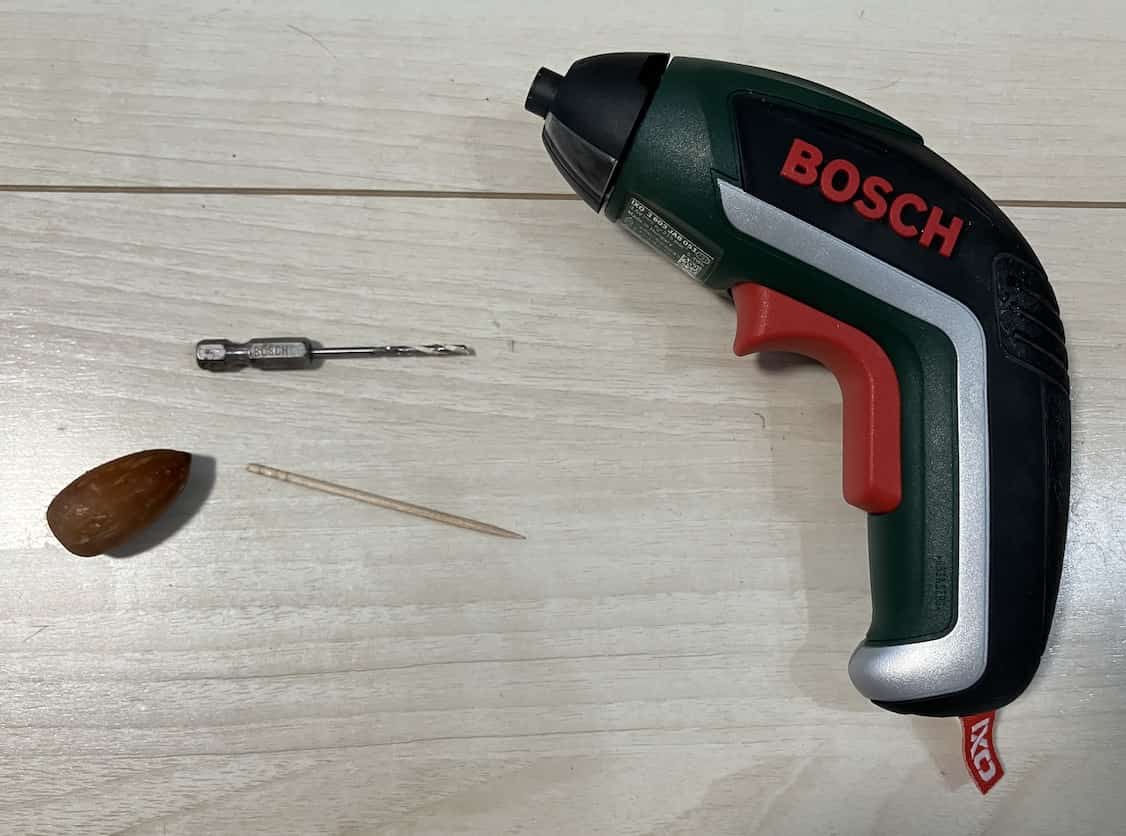
Your favorite acorn (the rounder and more uniform in shape, the better!)
Toothpick
A power drill about 2mm in diameter (an awl is fine too, but make sure to use it with an adult)
Nippers or Pliers
(If needed) Wood glue
The instructions are incredibly simple. First, drill a straight hole through the center of the acorn. Insert the toothpick into the hole and cut it to a length that’s easy to spin using the nippers. If the axis is wobbly, you can stabilize it by applying a small dab of wood glue to the tip of the toothpick before inserting it.
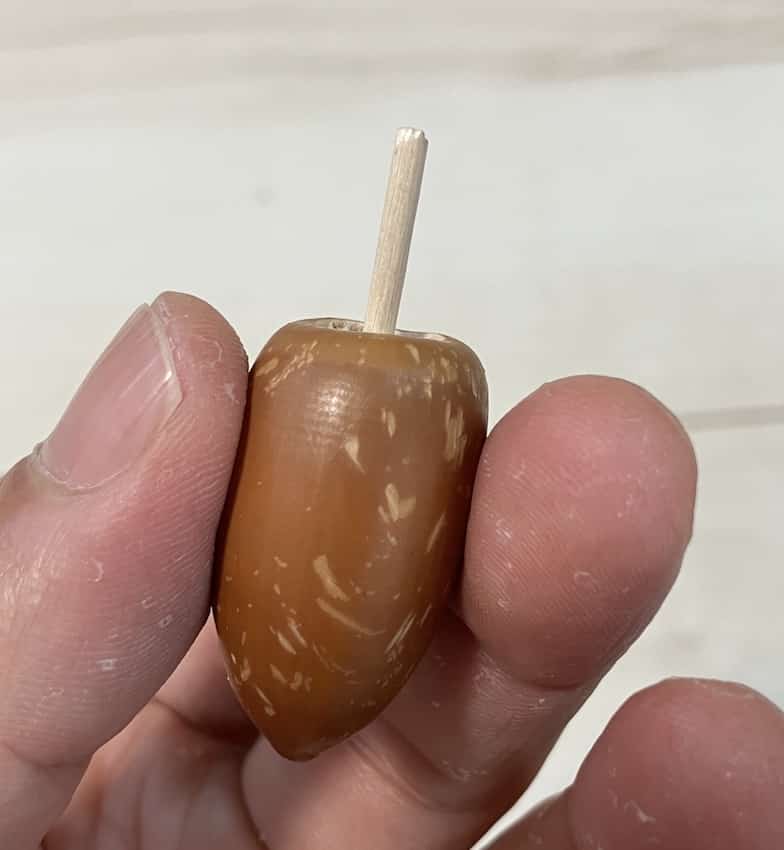
Painting them is fun too!
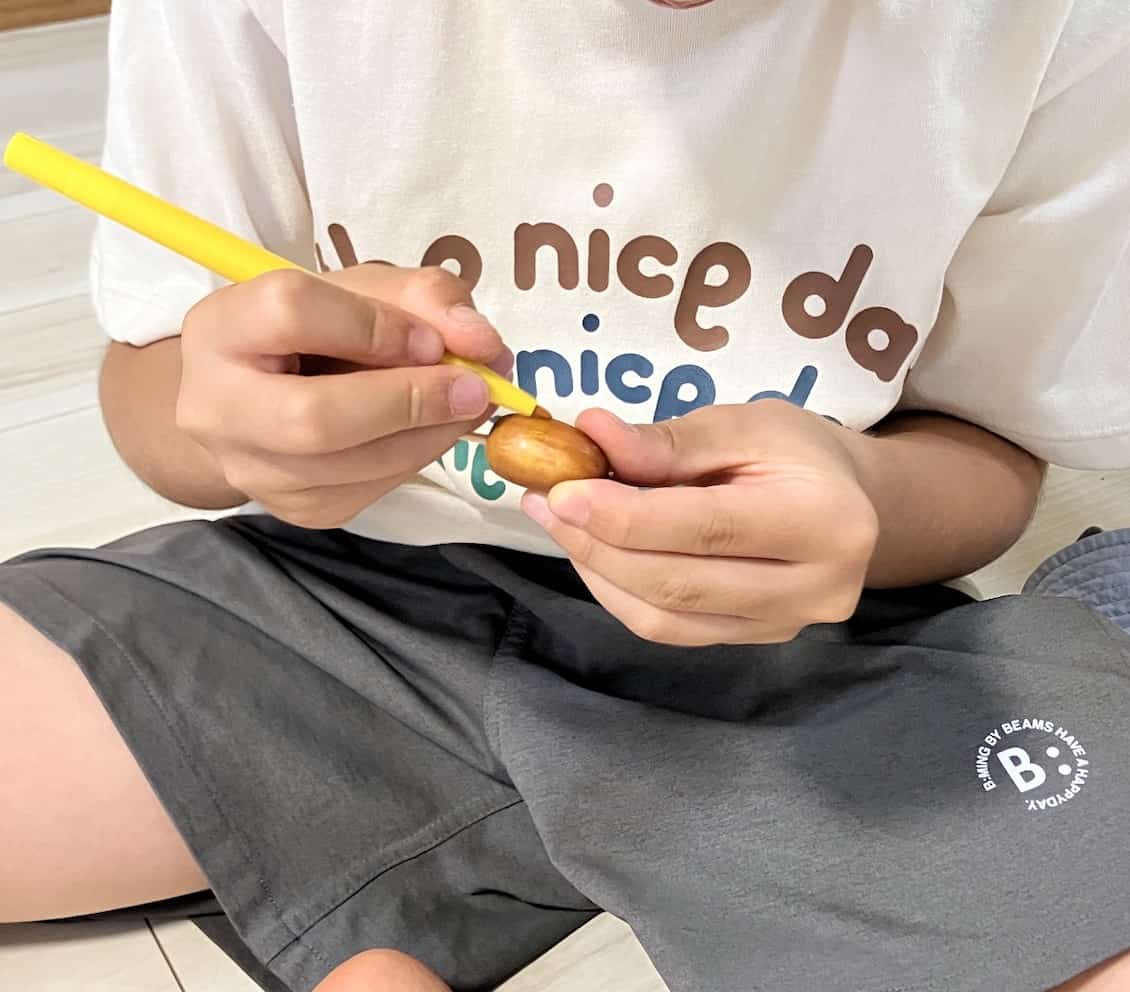
That’s all there is to it! It’s simple, but watching the top they made themselves spin brings kids so much joy. The play quickly expanded, with them spinning it over and over, and even pitting their homemade top against modern ones on a Beyblade stadium.
The Cosmic Law Hidden in a Small Top: The Gyroscopic Effect
This acorn top might look a bit top-heavy and unstable at first glance. But when you actually spin it, you’ll be surprised at how incredibly stable and powerfully it keeps rotating.
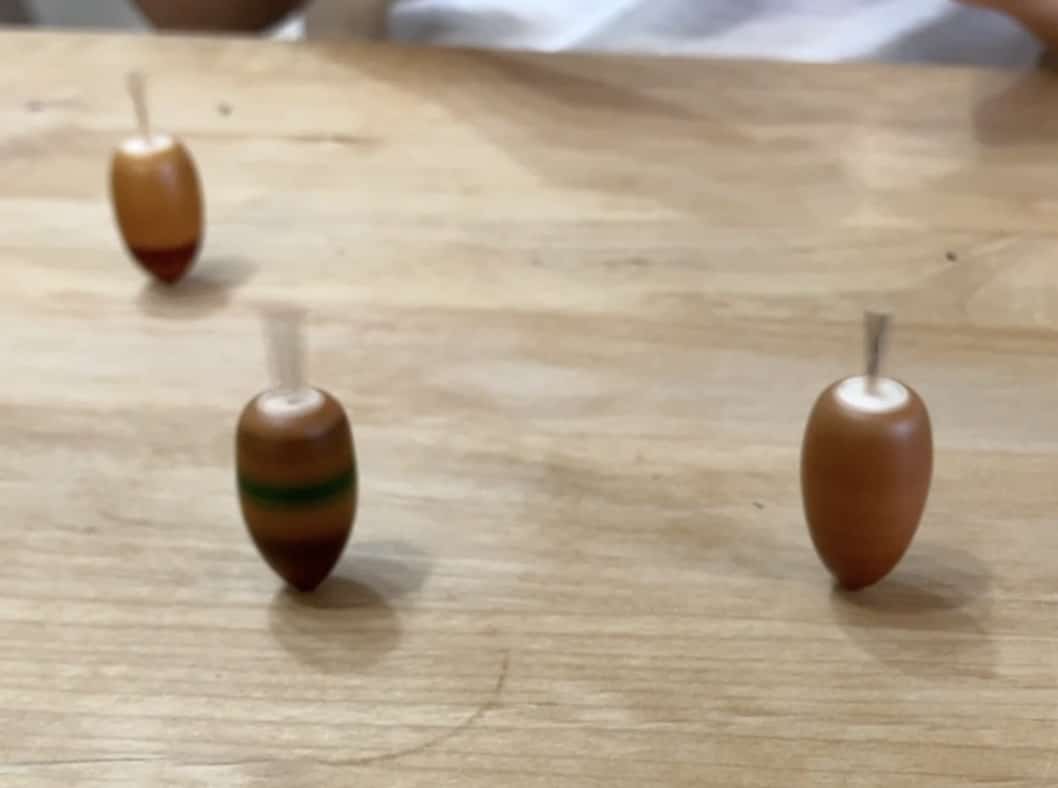
What’s even more fascinating is what happens when you intentionally spin it at an angle. While you’d expect it to fall over, the top actually corrects its own axis, trying to pull itself back into a perfectly upright position.
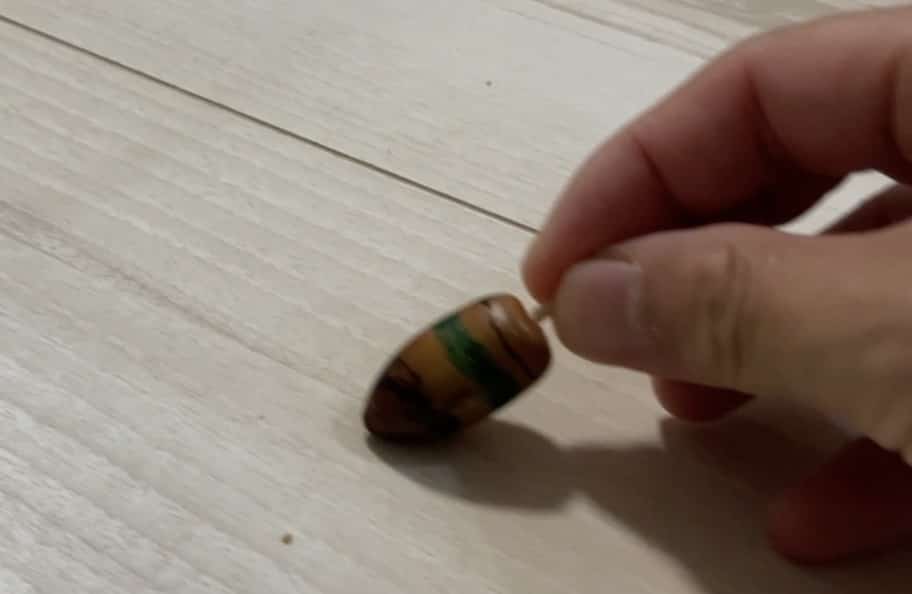
This is the “Gyroscopic Effect,” the same phenomenon that makes a bicycle hard to tip over once it’s moving, and allows figure skaters to pull off those beautiful, steady spins.
It might sound complicated, but just think of it this way: the top has a tendency to “fight to maintain its current state of rotation!” That’s why even when a force trying to knock it over (gravity) is applied from the side, it resists and tries to stay standing. This mysterious force is applied in space to control the attitude of satellites, and is even used in the sensors inside your smartphone that detect its tilt.
Isn’t it exciting to think that the spin of a tiny acorn is connected to cutting-edge technology?
The Moment Play Turns into “Why?”
“Why doesn’t it fall over?” “How can I make it spin longer?”
The simple questions children ask while intensely spinning the top—these are the very entrance to science.
“Maybe I need to choose a straighter acorn!” “Let’s try changing the length of the axle!”
The “Why?” born from play transforms into “Inquiry,” where they form hypotheses and test them through trial and error.
A single acorn simultaneously opened the door to fun family time and the world of science. I encourage everyone to find this small piece of autumn treasure at your feet and play in the magnificent world of science.
Contact and Requests
Make the wonders and fun of science more accessible! I’ve compiled easy-to-understand tips and tricks for fun science experiments you can do at home. Feel free to search around!
・About the administrator, Ken Kuwako: click here
・For various requests (writing, lectures, experiment classes, TV supervision, appearances, etc.): click here
・Article updates are posted on X!
![]() The Science Content Channel is streaming experiment videos!
The Science Content Channel is streaming experiment videos!


